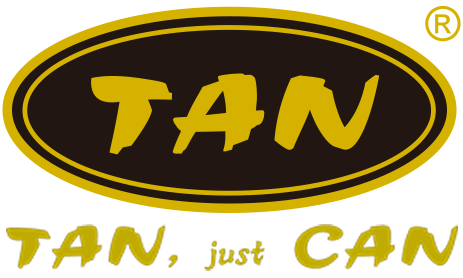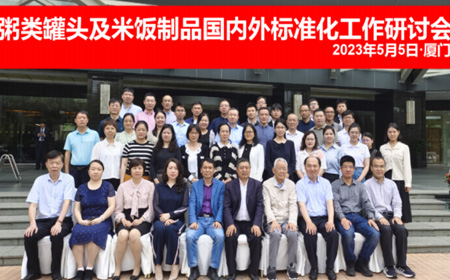In the competitive landscape of the food industry, canned food manufacturers face the ongoing challenge of balancing cost efficiency with product quality. In an era marked by evolving consumer preferences, stringent regulations, and economic pressures, finding the optimal balance between cost-effective production methods and maintaining high standards of quality is essential for success. In this blog post, we'll explore the complexities of this balancing act in canned food manufacturing, examining the role of mushroom production technology and offering valuable insights into strategies for achieving both cost efficiency and quality excellence.
Understanding Cost Efficiency in Canned Food Manufacturing:
Cost efficiency is a critical consideration for canned food manufacturers seeking to maximize profitability and remain competitive in the market. At its core, cost efficiency involves minimizing expenses while maximizing output and productivity throughout the manufacturing process.
One key aspect of cost efficiency in canned food manufacturing is optimizing raw material sourcing and procurement. This may involve negotiating favorable contracts with suppliers, leveraging economies of scale, and exploring alternative sourcing options to secure high-quality ingredients at competitive prices.
Additionally, maximizing operational efficiency and minimizing waste are essential for achieving cost efficiency in canned food manufacturing. This includes streamlining production processes, investing in automation and technology, and implementing lean manufacturing principles to minimize downtime and maximize resource utilization.
Insight: Cost efficiency in canned food manufacturing requires a holistic approach that encompasses raw material sourcing, production processes, and waste management to optimize resource utilization and minimize expenses.
Maintaining Quality Standards:
While cost efficiency is paramount, canned food manufacturers must also prioritize product quality to meet consumer expectations and regulatory requirements. Quality assurance begins with sourcing high-quality ingredients and extends throughout the entire manufacturing process, from production and packaging to distribution and storage.
Mushroom production technology plays a significant role in maintaining quality standards in canned food manufacturing. By leveraging innovative cultivation techniques and controlled growing environments, manufacturers can ensure the freshness, flavor, and nutritional content of mushrooms used in canned food products.
Furthermore, adherence to strict quality control measures and compliance with food safety regulations are essential for maintaining product integrity and consumer trust. This includes rigorous testing and inspection procedures, adherence to Good Manufacturing Practices (GMP), and compliance with Hazard Analysis and Critical Control Points (HACCP) guidelines.
Insight: Upholding quality standards is essential for building brand reputation and consumer trust in canned food manufacturing, requiring stringent quality control measures and adherence to food safety regulations.
Strategies for Balancing Cost Efficiency and Quality:
Achieving the delicate balance between cost efficiency and quality excellence in canned food manufacturing requires a strategic approach and a commitment to continuous improvement. Manufacturers can adopt several strategies to optimize both cost and quality aspects of their operations:
- Process Optimization: Continuously evaluate and optimize production processes to minimize waste, reduce downtime, and improve overall efficiency. This may involve investing in technology and automation, streamlining workflows, and implementing lean manufacturing principles.
- Supplier Collaboration: Build strong partnerships with suppliers and negotiate mutually beneficial contracts to secure high-quality ingredients at competitive prices. Work closely with suppliers to optimize sourcing strategies and ensure consistent quality and availability of raw materials.
- Quality Assurance: Implement robust quality assurance protocols and invest in testing and inspection procedures to maintain product integrity and safety standards. Train employees on quality control measures and ensure compliance with regulatory requirements.
- Continuous Improvement: Foster a culture of continuous improvement within the organization, encouraging employees to identify opportunities for innovation, efficiency gains, and quality enhancements. Regularly review and benchmark performance metrics to track progress and identify areas for improvement.
- Consumer Feedback: Listen to consumer feedback and incorporate customer insights into product development and improvement efforts. Engage with consumers through surveys, focus groups, and social media channels to understand their preferences and expectations.
Insight: By adopting a proactive approach to process optimization, supplier collaboration, quality assurance, continuous improvement, and consumer feedback, canned food manufacturers can effectively balance cost efficiency with quality excellence, driving long-term success and competitiveness in the market.
Conclusion:
In conclusion, achieving the delicate balance between cost efficiency and quality excellence is a key challenge for canned food manufacturers. By leveraging strategies such as process optimization, supplier collaboration, quality assurance, continuous improvement, and consumer feedback, manufacturers can strike the optimal balance between cost and quality, driving profitability, and maintaining consumer trust. With a commitment to excellence and innovation, canned food manufacturers can navigate the complexities of the industry landscape and achieve sustainable growth in the competitive market.



采访刊发中国罐头⾏业-01.jpg)

